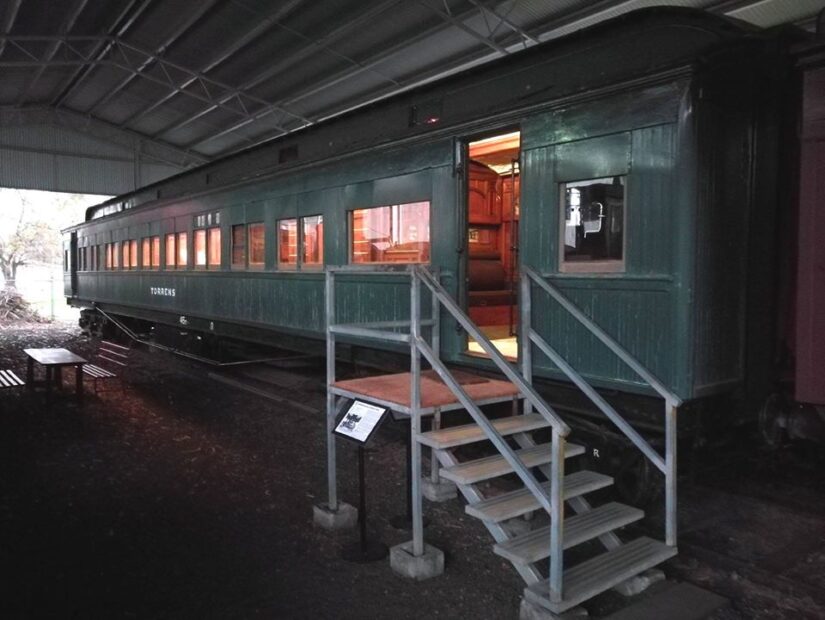
Sleeping car with twin-berths, based on the E car design.
Entered service in October 1907 as "Adelaide", renamed "Torrens" in 1910 to match the other cars of this type, named after rivers.
This car was owned jointly by Victorian and South Australian Railways and used on the Overland between Melbourne and Adelaide.
With new steel stock being introduced by the 1960s, the cars were transferred respectively to each state. Victoria used 9 of the cars for the "Train of Knowledge", a train for school-children to travel on weekly excursions.
Torrens was retired in 1967, and is now open for inspection every Museum opening day. Exterior restoration is underway to repaint the carriage to the lined Larch Green of the 1930s Overland train.
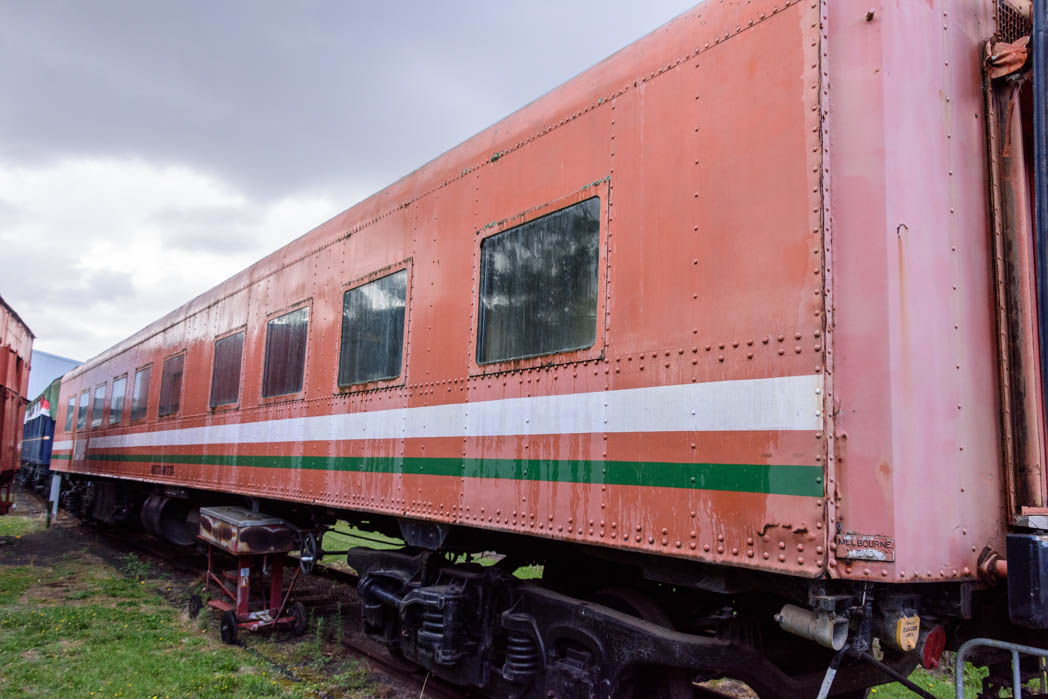
Constructed in February 1939 for use on the Spirit of Progress, the Victorian Railways flagship train between Melbourne and Albury. It was one of three buffet cars constructed at the time, the others being named Wimmera and Tanjil.
Converted to Standard Gauge in 1962 for running through to Sydney.
Retired from service in 1991 in Sydney, and returned to Newport in 1992, entering the Museum later that year.
A popular choice for birthday parties and events. Open to the public during all open days.
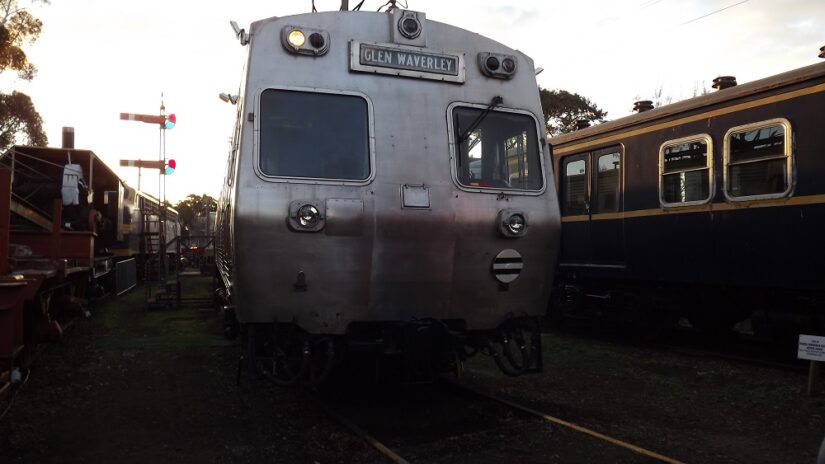
"Hitachi" type carriage constructed by Martin and King of Bayswater, with electrical equipment supplied by Hitachi Japan and fitted at Newport.
187M was delivered to Victorian Railways in May 1979 and withdrawn in 2004.
This was the last type of suburban carriage to feature opening windows, and the last without air conditioning.
A popular carriage for film shoots, photography and Melbourne suburban train enthusiats. Open for inspection for special events.
Photo by Andrew Henderson
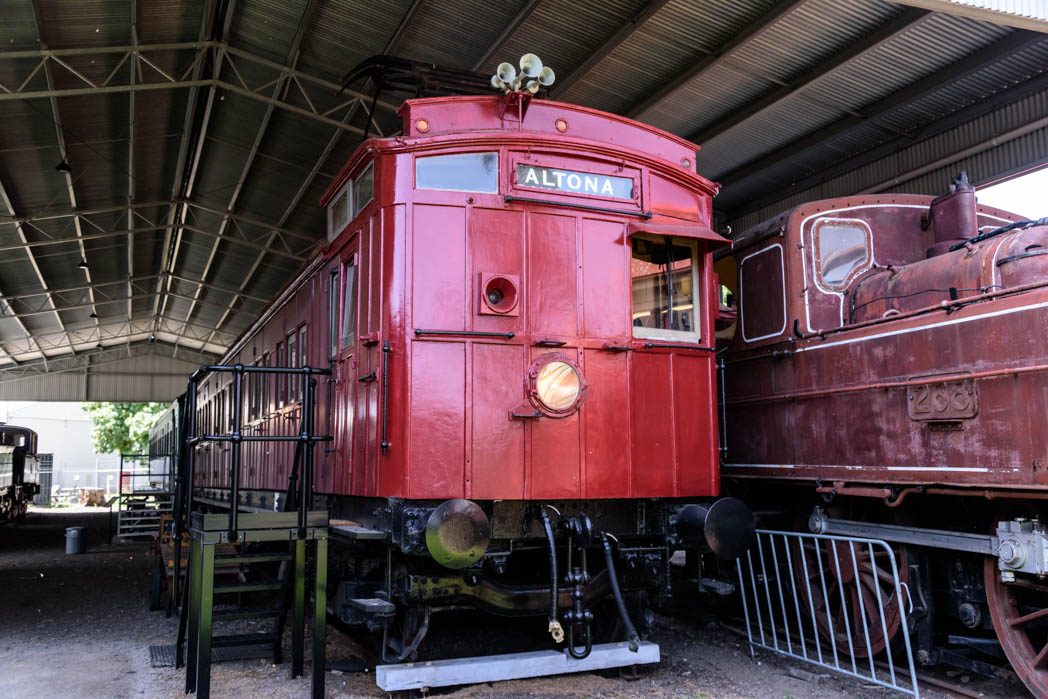
8M is a rare example of an a Swing Door-type Melbourne suburban electric carriage.
When Melbourne’s suburban rail network was electrified in the late 1910s and early-to-mid 1920s, the newly-introduced electric trains proved to be a significant improvement over the previous steam locomotive-hauled suburban services. As well as the absence of smoke and cinders, the electric trains accelerated much faster than steam locomotive-hauled trains. Given the many station stops required on a suburban service, this fast acceleration provided the opportunity for major reductions in journey times. However, in order to introduce a timetable that delivered these faster services, Victorian Railways needed to rapidly assemble a large fleet of electric suburban carriages to enable the slower steam trains to be phased out.
To this end, large numbers of existing steam-hauled carriages, many of which were already decades old, were converted into self-propelled electric “motor” carriages, and 8M is an example of one of these carriages.
Originally constructed in May 1888 as 9 ADAD, a First Class suburban passenger carriage, it modified in 1909 to add an extra 12 feet (3.6m) of length. It was modified again in 1923 to fit the General Electric motors and control equipment. Its guards compartment was fitted with a driver’s cab, a pantograph was fitted to its roof to collect 1500VDC power from the overhead line, and it was equipped with a new, stronger frame and bogies fitted with electric traction motors, and it was recoded as 8AM, the A and M coding indicating that it was a First Class motor carriage. When separate First and Second Class travel was abolished in 1958, the A was dropped from its code.
Following the introduction of successive orders of new blue and yellow “Harris” suburban carriages in the 1950s and 1960s, 8M was retired from service in June 1967, having been in service for nearly 80 years!
We present one of its passenger compartments for visitors to view. Its guards compartment is also open for visitors to view at selected times on regular museum open days.

Above: the unrestored interior of one of 8M’s compartments. Note window shades, luggage racks, and photography of Victorian countryside, which was intended to stimulate interest in tourism within the state.
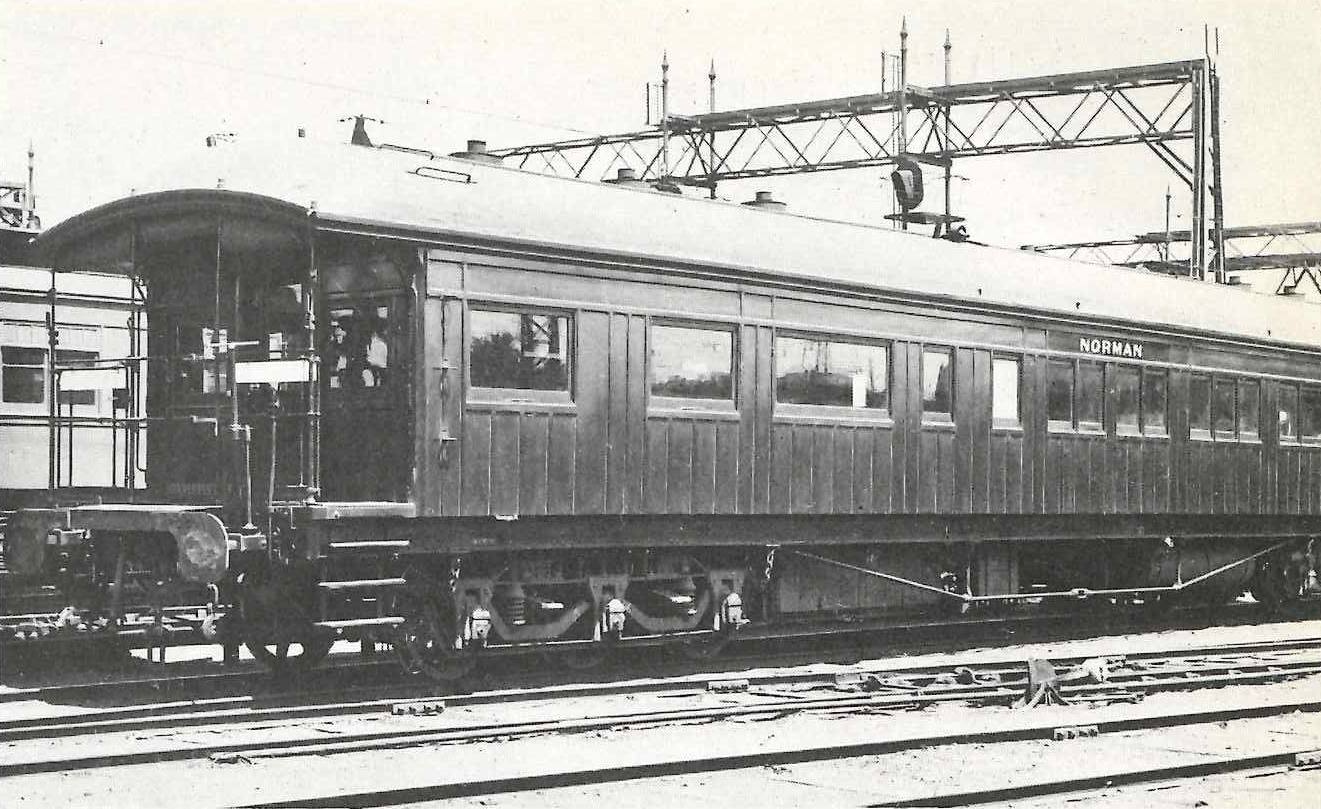
Entered service on the 5th June 1890, renamed "Inspection Car" in 1900.
This car was used by the Railway Commissioners who would travel the state inspecting the network and stations, but also doubled as a "State Car" for Royal visits.
Retired from service in 1963, and now open for the public every opening day.
Constructed by private builders Wright and Edwards in 1880, subsequently reclassed as ABAB, AB, B until withdrawn in 1941.
Stripped and converted to Way and Works van 10WW in 1942, and finally retired in 1968.
Entered service in 1908 as a long-distance dining car to the E car design.
In 1938 it was extensively modified and converted to the Medical and Vision Test Car, which travelled to remote parts of the state to provide medical checks for railway workers.
Second-series "Blue Harris" suburban carriage.
Constructed at Newport Workshops, entering service in August 1968. Withdrawn in June 1988 with the rest of the Harris fleet.
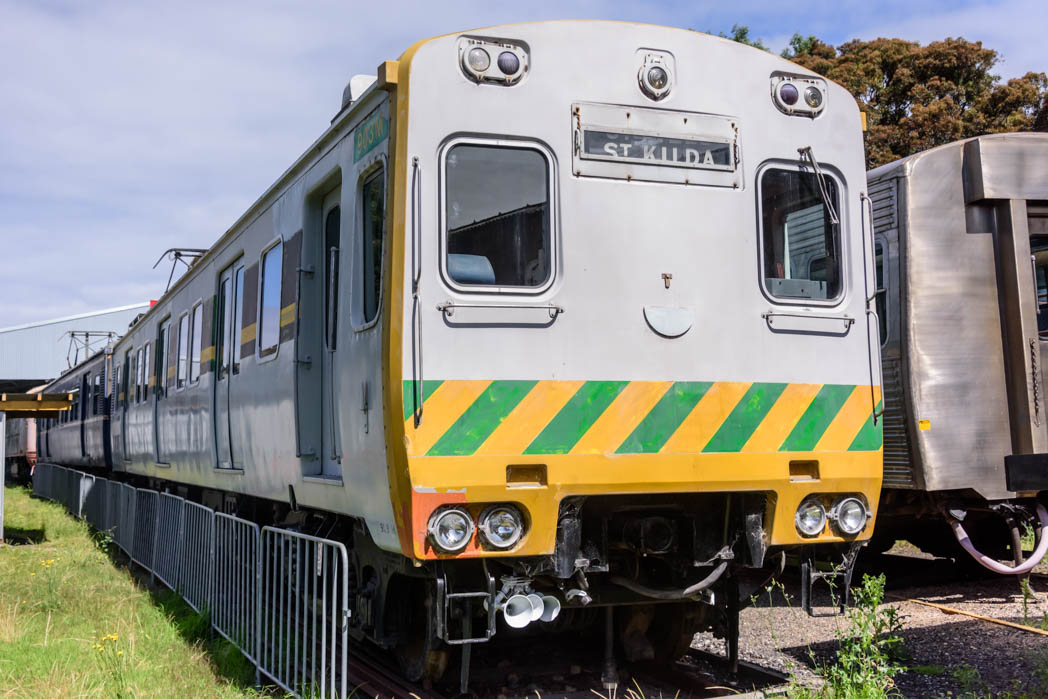
Originally built in 1964 as 744M, to the same design as 795M.
Extensively stripped and modified by Commonwealth Engineering of Dandenong in 1982 to have the same controller, desk layout, airconditioning and interior as the \”Comeng Supertrains\” then under construction. 8 motor cars and 8 trailer cars were modified in this way
The number then alternated between 903 and 603M several times during 1983-1984 as the Comeng order was extended.
Ultimately the upgrades were considered a failure and not continued. Cab visibility, a major issue of the Harris trains, was made worse by the seat being moved further back. While the cab and interior had been upgraded, the underfloor electrical equipment and motors that drive the wheels were not, and the extra weight of the airconditioning and soundproofing caused acceleration and braking to be considerably slower. As a result, these sets were limited to the relatively flat and short St Kilda, Port Melbourne and Sandringham lines.
The cars were all retired by 1991. Some were modified again and remain in service with V/line, used on short distance commuter trains.






